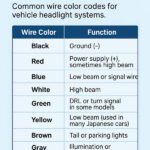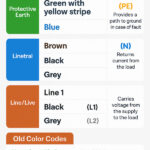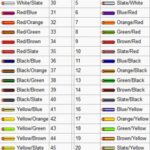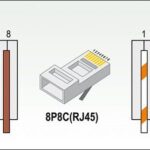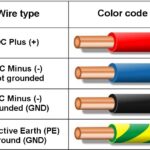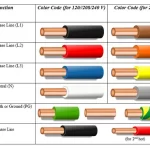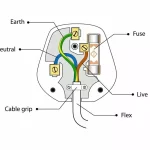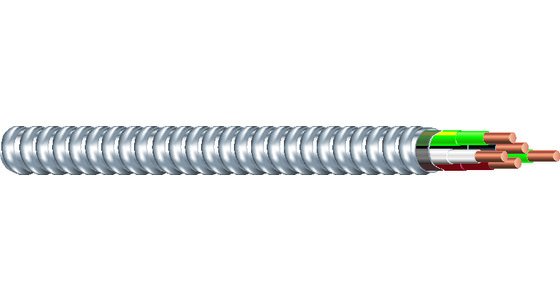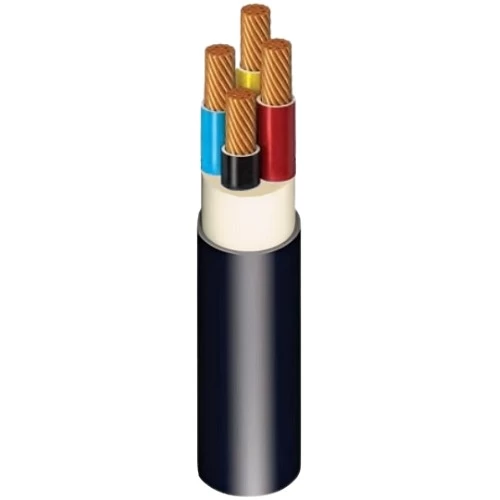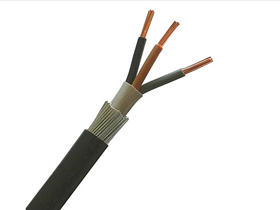Understanding US electrical wire color codes is essential for safe electrical work, code compliance, and proper system maintenance. This comprehensive guide covers the National Electrical Code (NEC) standards and common practices used throughout the United States.
Overview of US Electrical Wire Color Codes
The National Electrical Code (NEC), published by the National Fire Protection Association (NFPA), establishes the foundation for electrical wire color coding in the United States. These standards ensure consistency, safety, and proper identification across all electrical installations.
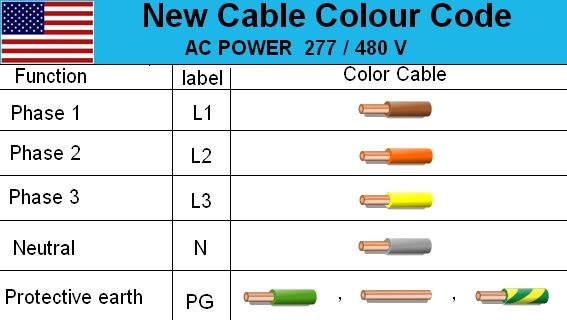
us electrical wire color code
Standard US Wire Color Codes by Voltage and Application
120V/240V Residential Systems
Hot Wires (Line/Live)
- Black: Primary hot wire in 120V circuits, Line 1 in 240V systems
- Red: Secondary hot wire in 240V circuits, switched hot in some applications
- Blue: Additional hot wire in multi-wire branch circuits
- Brown: Hot wire in 277V/480V commercial systems (when used in residential)
Neutral Wires
- White: Grounded neutral conductor in most applications
- Gray: Alternative neutral wire color, often used in commercial applications
Ground Wires
- Green: Equipment grounding conductor
- Green with Yellow Stripe: Equipment grounding conductor (alternative)
- Bare Copper: Equipment grounding conductor (uninsulated)
277V/480V Commercial and Industrial Systems
Hot Wires
- Brown: Phase A (Line 1)
- Orange: Phase B (Line 2)
- Yellow: Phase C (Line 3)
- Gray: Neutral conductor
- Green or Bare: Equipment grounding conductor
High Voltage Systems (Over 600V)
High Voltage Conductors
- Brown: Phase A
- Orange: Phase B
- Yellow: Phase C
- White or Gray: Neutral (if present)
- Green: Equipment grounding conductor
Detailed Wire Color Applications
Residential Wiring Color Codes
Standard 120V Circuits
- Black Wire: Hot wire carrying 120V from panel to outlets, switches, and fixtures
- White Wire: Neutral wire returning current to electrical panel
- Green/Bare Wire: Safety ground connecting to electrical boxes and equipment
240V Circuits (Electric Range, Dryer, AC Units)
- Black Wire: Hot wire #1 (120V to neutral, 240V between hot wires)
- Red Wire: Hot wire #2 (120V to neutral, 240V between hot wires)
- White Wire: Neutral wire (required for appliances needing 120V and 240V)
- Green/Bare Wire: Equipment grounding conductor
Three-Way Switch Circuits
- Black Wire: Common terminal connection
- Red Wire: Traveler wire between switches
- White Wire: Traveler wire or neutral (must be properly identified)
- Green/Bare Wire: Equipment grounding conductor
Commercial and Industrial Applications
Lighting Circuits (277V)
- Brown Wire: Hot conductor from panel
- Gray Wire: Neutral conductor
- Green Wire: Equipment grounding conductor
Motor Circuits
- Brown, Orange, Yellow: Three-phase power conductors
- Gray: Neutral (when required)
- Green: Equipment grounding conductor
- Red: Control circuit power
- Blue: Control circuit neutral
Special Purpose Wire Colors
Control and Signal Wiring
Low Voltage Control Circuits
- Red: 24V power supply positive
- Blue: 24V power supply negative/neutral
- Yellow: Thermostat heating control
- Green: Thermostat cooling control
- White: Common control wire
- Orange: Reversing valve control (heat pumps)
Fire Alarm Systems
- Red: Power supply positive
- Black: Power supply negative
- Yellow: Notification appliance circuits
- Blue: Initiating device circuits
Security Systems
- Red: Power positive
- Black: Power negative
- Green: Data positive
- White: Data negative
- Yellow: Tamper circuits
Communication and Data Wiring
Ethernet/Network Cables (Cat5e/Cat6)
- White/Orange: Transmit positive
- Orange: Transmit negative
- White/Green: Receive positive
- Blue: Unused pair 1
- White/Blue: Unused pair 1
- Green: Receive negative
- White/Brown: Unused pair 2
- Brown: Unused pair 2
NEC Requirements and Code Compliance
Mandatory Color Coding Requirements
Article 200 - Grounded Conductors
- White or gray insulation required for grounded conductors
- Identification required at termination points
- Re-identification allowed in certain circumstances
Article 250 - Grounding and Bonding
- Green insulation or bare copper for equipment grounding conductors
- Green with yellow stripe acceptable alternative
- Proper bonding and grounding requirements
Article 210 - Branch Circuits
- Proper identification of ungrounded conductors
- Multi-wire branch circuit requirements
- AFCI and GFCI protection requirements
Identification and Marking Requirements
Conductor Identification Methods
- Colored insulation (preferred method)
- Colored tape at termination points
- Tags or labels for identification
- Paint marking (limited applications)
Re-identification Rules
- White wire can be re-identified as hot with colored tape
- Minimum #6 AWG and larger conductors
- Clear marking at both ends required
- Documentation in electrical panel
Common Wiring Mistakes and Code Violations
Frequent Color Code Errors
Incorrect Neutral Usage
- Using white wire as hot conductor without proper re-identification
- Mixing neutrals between different circuits
- Improper multi-wire branch circuit installation
Grounding Violations
- Using ground wire as neutral
- Improper equipment bonding
- Missing equipment grounding conductors
Switch Loop Wiring Issues
- Improper use of white wire in switch loops
- Missing neutral conductors at switch locations
- Inadequate conductor identification
Testing and Verification Procedures
Electrical Testing Methods
Voltage Testing
- Use non-contact voltage testers for initial safety checks
- Digital multimeters for precise voltage measurements
- Always test known live circuit first
Continuity Testing
- Verify proper conductor connections
- Check for opens or shorts in circuits
- Confirm proper grounding connections
Polarity Testing
- Ensure hot and neutral are properly connected
- Verify proper three-way switch wiring
- Check outlet wiring orientation
Safety Procedures
Before Working on Electrical Systems
- Turn off power at circuit breaker
- Test circuits with voltage tester
- Lock out/tag out electrical panels
- Use appropriate personal protective equipment
- Follow OSHA electrical safety standards
Modern Electrical System Considerations
Smart Home and Automation Wiring
Smart Switch Requirements
- Neutral wire required for most smart switches
- Communication wiring for networked devices
- Power over Ethernet (PoE) applications
Home Automation Protocols
- Z-Wave and Zigbee wireless protocols
- Insteon powerline communication
- KNX/EIB bus systems
Renewable Energy Systems
Solar Panel Wiring
- Red and Black: DC positive and negative
- White: AC neutral from inverter
- Green: Equipment grounding
- Rapid shutdown device wiring
Battery Storage Systems
- Specific manufacturer color coding
- High voltage DC safety requirements
- Monitoring and control wiring
Regional and Local Code Variations
State and Local Amendments
Common Local Modifications
- Additional GFCI requirements
- Enhanced grounding standards
- Specific material requirements
- Inspection and permitting procedures
Jurisdiction-Specific Requirements
- Check with local electrical inspector
- Review local code amendments
- Understand permit requirements
- Follow local inspection procedures
Professional Installation Guidelines
Best Practices for Electricians
Planning and Design
- Create detailed wiring diagrams
- Plan wire routing and connections
- Calculate electrical loads properly
- Consider future expansion needs
Installation Quality
- Use appropriate wire sizes and types
- Make secure electrical connections
- Provide proper conductor support
- Label circuits clearly in electrical panel
Documentation and Inspection
- Maintain installation records
- Photograph complex wiring configurations
- Schedule required electrical inspections
- Provide system documentation to owners
Troubleshooting Common Electrical Issues
Systematic Diagnosis Approach
Circuit Problems
- Check circuit breaker status
- Test voltage at panel and outlets
- Verify wire connections and condition
- Check for overloaded circuits
Ground Fault Issues
- Test GFCI outlets and breakers
- Check for moisture or damaged insulation
- Verify proper equipment grounding
- Inspect outdoor and bathroom circuits
Conclusion
Understanding US electrical wire color codes is fundamental to safe and code-compliant electrical work. Whether you're a professional electrician, contractor, or informed homeowner, following NEC standards and local code requirements ensures electrical system safety and reliability.
Always remember that electrical work can be dangerous and may require professional installation and local permits. When in doubt, consult with a licensed electrician and your local electrical inspector to ensure proper installation and code compliance.
Stay current with NEC updates, local code amendments, and manufacturer recommendations to maintain the highest standards of electrical safety and performance in all your electrical projects.



